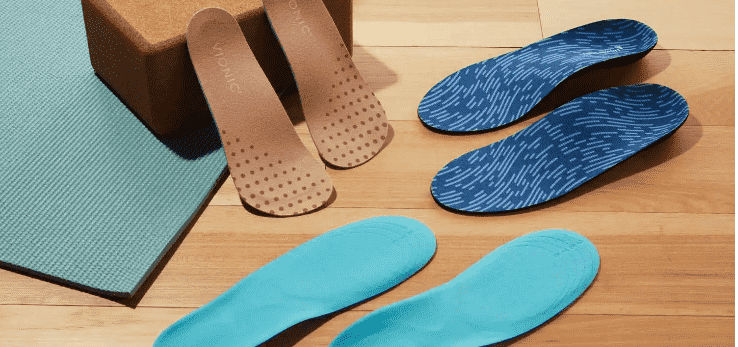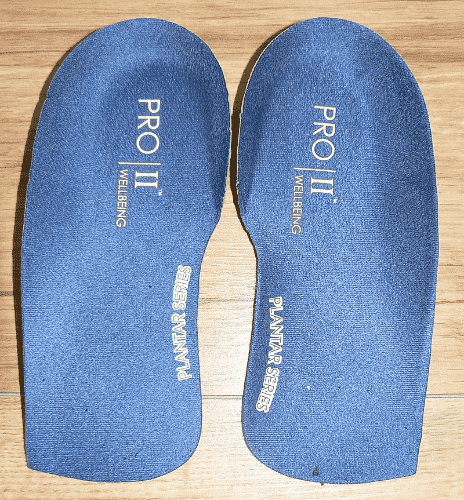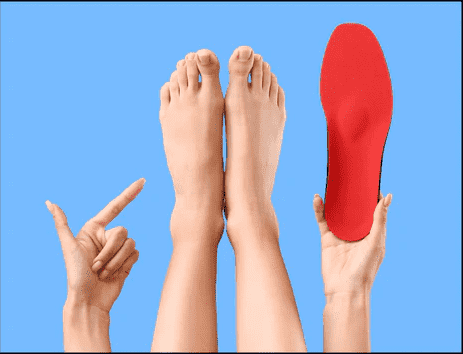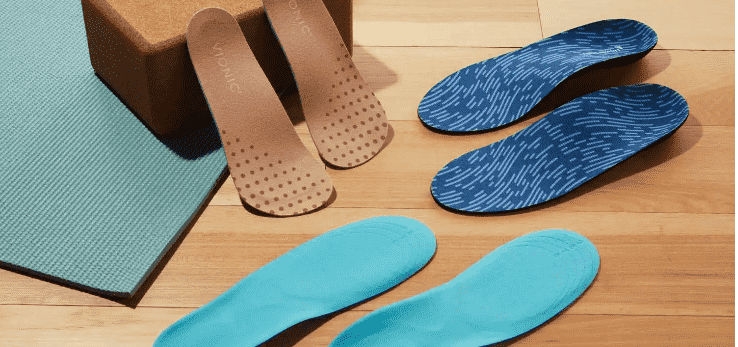what are the insoles of shoes: Introduction
Hey, shoe lovers and comfort-seekers alike! Have you ever slipped on shoes and felt like you were taking walks in the clouds? Or did it become superior in quality, such as walking on a rocky path? Well, a variety of those issues are the unsung heroes of our footwear – the insoles. Let’s chat about insoles for shoes and why they are more critical than you believe you studied.
So, What precisely are the insoles of shoes? Insoles, footbeds, or inner soles are the layers internal to your shoes, which run below your toes. They’re the cozy element that usually sets you apart between a comfy step and a painful trot. These bad boys are available in all shapes and sizes and can be made from foam, gel, leather-based, or sheepskin.
But insoles aren’t just about padding. Nope, they have quite a crucial role to play. They’re designed to guide your toes, supporting you in distributing weight calmly when you walk, run, or stand. This could make a difference if you spend a lot of time on your toes. And you’re an athlete? Proper insoles can differentiate between putting in a personal mentor or sitting out with sore feet.
You may not understand it, but insoles also play a position in the health of your shoes. They’re like a barrier, absorbing a whole lot of the sweat and effect that could otherwise move immediately into the only of your shoe. This means your favorite pair of shoes can last longer before they begin to get that tired look (and odor).
Plus, the beauty of insoles is that they may be replaceable. If you are not feeling the affection from your modern pair, you could swap them out without problems for a new set that provides more significant support, cushioning, or even orthopedic benefits for people with foot conditions.
Your shoes’ insoles are more important than just a bit of fabric or foam. They’re a crucial element that can significantly enhance the comfort of your shoes, performance, and sturdiness. Next time you slip into your favorite duo, take a second to realize the standard insole—consider me; your feet will thank you.
Understanding Shoe Insoles
Shoe insole, on the other hand, is synonymous with footbed or inserts. These elements provide assistance, cushioning, and comfort in the inner soles of shoes. These elements can create a pleasing shoe look, absorb shock, and relieve the pain of the feet. Furthermore, they can stabilize the feet during exercise, reducing injury risks.
Anatomy of Shoe Insoles
Shoe insoles commonly comprise several layers, each serving a selected reason. The uppermost layer, called the ‘top cover,’ is the part of the insole that directly touches the foot. It is often manufactured from a smooth, moisture-wicking material to beautify comfort and save you smell. Beneath the top cover, many layers of cushioning materials provide help and surprise absorption. Common materials include foam, gel, and air pockets. The base layer of the insole, sometimes called the ‘backside cover,’ affords stability and durability. Insole construction techniques may vary depending on the intended use and design possibilities, with some insoles Providing shaped forms or specialized support zones.

Benefits of Using Shoe Insoles
Using shoe Insoles provides several benefits for foot health and typical comfort. Enhanced consolation and assist are the number one benefits, as insoles assist in cushioning the feet and decrease fatigue through prolonged status or on-foot intervals. Insoles can also save you or alleviate common foot conditions, including plantar fasciitis, heel spurs, and overpronation, by extending further assistance and alignment. Additionally, insoles may improve posture and alignment, decreasing strain at the ankles and knees and decreasing back.
Common Foot Problems Addressed by Insoles
Many foot issues can be addressed or mitigated using appropriate insoles. Plantar fasciitis, a not unusual motive for heel pain, may be relieved using insoles with arch assist and cushioning in the heel region. Heel spurs, bony protrusions that form at the heel bone, may be cushioned and guarded, opposing further inflammation through heel cups or gel inserts. Overpronation and supination, which talk to the outward rolling of the foot all by walking, can be corrected or stabilized with motion-manage insoles designed to sell proper foot alignment.
Types of Shoe Insoles
Several shoe insoles are to be had to address unique foot needs and possibilities. Cushioned insoles offer gentle padding and surprise absorption, which is good for individuals seeking more suitable consolation. Orthotic insoles offer specialized assistance and alignment for particular foot conditions or biomechanical issues. Arch aid insoles function raised arches to alleviate pain and fatigue associated with flat toes or fallen arches. Gel insoles comprise gel-stuffed wallets to provide targeted cushioning and reduction of strain—memory foam insoles mildew to the foot’s form for personalized consolation and support.
Types of Shoe Insoles
Various types are to be had when selecting the right shoe insoles, every designed to address specific foot desires and provide a number of benefits. Let’s find a number of the most commonplace sorts:
1. Cushioned Insoles:
Description:
Cushioned insoles are designed to provide more padding and shock absorption, supplying a gentle and snug experience underfoot.
Function:
These insoles feature a cushioning effect in your toes, reducing this factor while walking or running, freeing you from uncomfortable feelings and unnecessary tiredness.
Ideal for:
Individuals who stand over long periods on their feet might also participate in rigorous activities such as hiking or walking.
2. Orthotic Insoles:
Description:
Orthotic insoles are designed to provide aid and stability to the toes, regularly with a contoured design to healthy the foot’s natural shape.
Function:
They assist in correcting biomechanical imbalances, including overpronation or supination, and alleviate associated troubles like arch pain or plantar fasciitis.
Ideal for:
People with structural foot troubles or those looking for improved guide and alignment.
3. Arch Support Insoles:
Description:
Arch help insoles are designed to provide a targeted guide to the foot’s arch, calmly supporting stress distribution and preserving proper alignment.
Function:
An inner or outer support of the arch, with the help of these insoles, can manage the pain of the arch and reduce stress on the plantar fascia.
Ideal for:
The first group is people who endure flat feet or fallen arches, and the second group includes those who experience symptoms like soreness and fatigue associated with the arches.
4. Gel Insoles:
Description:
Gel insoles function pads or inserts strategically placed in the insole to provide cushioning and shock absorption.
Function:
The gel fabric conforms to the shape of the foot, imparting targeted aid and reducing strain points, particularly in touchy areas like the heel or ball of the foot.
Ideal for:
People looking for additional consolation and impact protection and those with heel spurs or metatarsalgia.
5. Memory Foam Insoles:
Description:
The memory foam insoles are made from viscoelastic foam that molds to the shapes of the foot by reaction to body heat and the weight-bearing strain conditions the foot creates.
Function:
With their custom cushioning and perfectly fitted to the shape of each foot, these insoles are more comfortable for the feet and help to restore balance.
Ideal for:
Individuals seeking custom-match cushioning, relief from strain factors, and progressed shock absorption at some stage in everyday activities.
Choosing the appropriate insole depends on your foot wishes, pastime stage, and favored degree of comfort and aid. Considering those factors carefully is essential to ensure top-rated foot fitness and basic well-being.

Specialty Insoles for Specific Needs
Specialty insoles cater to specific sports or medical situations. Sports overall performance insoles are designed to decorate athletic overall performance and reduce the risk of injuries by offering targeted guide and shock absorption. Work boots and safety insoles shield against impact, compression, and puncture risks in unsafe painting environments. Diabetic insoles are specifically designed to accommodate sensitive toes and reduce the danger of strain ulcers, blisters, and other headaches associated with diabetes.
Custom vs.Over-the-Counter Insoles
Pre-fabricated insoles are alike for different individuals, but custom-made insoles are unique and are formulated to the man or woman’s foot shape, biomechanics, and personal needs. They provide tailored support and guidance, yet they can be high-priced and need professional fitting. Over-the-counter insoles are incredibly affordable and easily accessible, but they might also offer a fantastic stage of customization or guide. Choosing between custom and over-the-counter insoles relies upon price range, foot situation severity, and private preferences.
How to Properly Fit Insoles
Properly becoming insoles is critical for the most beneficial consolation and effectiveness. Insoles must be selected primarily based on shoe length and foot shape, with attention given to the person’s specific capabilities and help needs. Insoles may want to be trimmed or adjusted to be healthy efficiently inside the shoe and accommodate any present foot problems or footwear constraints.
Maintaining and Cleaning Insoles
Regular cleansing and preservation are vital to extend the insoles’ lifespan and maintain hygiene. Insoles must be removed from shoes periodically and cleaned with slight cleaning soap and water. Air drying is recommended to prevent harm to cushioning substances. Insoles must be replaced frequently as they wear out or lose effectiveness, usually every six months to a year with ordinary use.
Signs You Need New Insoles
Wear and tear on insoles can affect their overall performance and luxury over time. Signs that indicate the need for brand-spanking new insoles encompass visible harm, including cracks or tears, decreased cushioning or support, and adjustments in consolation or match. Inspecting insoles frequently and changing them as needed can help prevent foot aches and discomfort.
DIY Insole Solutions
DIY insole answers can occasionally provide a brief respite from foot aches or pain. Homemade inserts or pads may be made from foam, felt, or material to give extra padding or help. Temporary solutions, which include moleskin patches or adhesive padding, can alleviate strain factors or warm areas up to proper insoles.
Insoles for Different Foot Types
Various foot types call for particular styles of guide and cushioning. Flat toes may also be advantageous from insoles with arch guides to lessen stress at the arches and sell better alignment. High arches may also need softened insoles to take in shock and distribute strain more serenely during the foot. Individuals with neutral or everyday arches may also discover suitable insole options, depending on their consolation and support preferences.
Eco-Friendly and Sustainable Insole Options
As the environmental focus expands, environmentally friendly and sustainable insole options are becoming increasingly famous. Materials, which include recycled plastics, herbal fibers, and renewable resources, produce insoles that decrease environmental effects. Some manufacturers prioritize sustainable practices for the length of production, from sourcing materials to packaging and distribution.
Innovations in Insole Technology
Advancements in generation have led to innovative capabilities in modern insoles. Smart insoles with sensors and monitoring capabilities can screen gait, stress distribution, and pastime stages to provide insights into foot health and performance. Potential developments in the future could include personalized insole solutions tailored to man or woman biomechanics and way of life choices.

The Right Insole – Tips for Selection
Identify Foot Type:
Determine if your feet are flat, too arched, or have a unique sign arch.
Consider Foot Condition:
If you’ve got foot conditions or aches, select insoles to cope with them.
Consider Different Options:
Take a variety of insoles to find the one that provides sufficient comfort and support.
Consult a Professional:
If you’ve severe foot problems, seek a recommendation from a podiatrist or shoe professional.
Comparing Various Insoles
| Insole Type | Arch Support | Cushioning | Orthotic Support | Best For |
| Arch Support | High | Moderate | Low | Flat Feet, High Arches |
| Cushioning | Low | High | Low | High-Impact Activities |
| Orthotic | Variable | Variable | High | Fort Conditions |
Conclusion
Shoe insoles are not simply an accessory but crucial in enhancing foot fitness and luxury. By knowing the different types and blessings and a way to select the right one, you can ensure better guidance, alleviate pain, and experience your shoes to the fullest. Invest in high-quality insoles to care for your toes and provide an international source of comfort and wellness.
